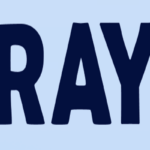keonhacai is the foundation of sports betting. Whether you’re placing a bet on your favorite football team or predicting the outcome of a tennis match, the odds determine both your potential payout and the implied probability of your chosen result. However, for many players — especially beginners — understanding how odds work, how they are set, and how to interpret them accurately can be confusing. This article offers a comprehensive explanation of bookmaker odds, helping you become a more informed and strategic bettor.
What Are Bookmaker Odds?
Bookmaker odds represent the probability of a specific outcome as determined by the bookmaker. More importantly, they indicate how much you can win if your prediction is correct. Various formats are used worldwide — decimal (e.g., 2.00), fractional (e.g., 1/1), and moneyline (e.g., +100) — but all serve the same purpose: to provide a price for an event.
For example, if a football team has odds of 1.50 to win, it means the bookmaker believes that team has a high chance of winning and thus, the payout will be lower. Conversely, odds of 3.00 suggest the team is an underdog, offering higher returns for greater risk.
How Bookmakers Set Odds
Bookmakers don’t just guess event outcomes — they use data, algorithms, and experience to calculate probabilities. They also factor in a margin to ensure they profit regardless of the result. This margin, known as the “overround,” is the built-in percentage that guarantees the bookmaker’s advantage.
For example, in a two-outcome event like a tennis match, if both players are evenly matched, each might have odds of 2.00 (50% probability). However, the bookmaker may offer odds of 1.91 for both, totaling an implied probability above 100%. The excess represents the bookmaker’s profit margin.
Types of Betting Markets
Understanding the various types of odds markets is essential. The most common include:
- 1X2 (Three-way betting): Common in football, this market allows you to bet on a home win (1), draw (X), or away win (2).
- Over/Under (Totals): You bet whether the total goals, points, or runs will be higher or lower than a specific number.
- Asian Handicap: This system levels the playing field by giving one team a virtual advantage or disadvantage, eliminating the draw possibility.
- Both Teams to Score (BTTS): A binary market where you bet on whether both teams will score in a match.
Each market has its nuances, and successful bettors select markets that match their analysis style and risk tolerance.
How to Read and Interpret Odds
Reading odds isn’t just about knowing how much you’ll win. It’s about understanding the implied probability behind those odds. You can convert decimal odds into probability using the formula:
Probability (%) = (1 / Decimal Odds) × 100
So, odds of 2.00 imply a 50% chance. If your own research suggests a higher likelihood than the bookmaker’s odds imply, you’ve found a potential value bet.
Value Betting: Spotting Opportunities
Value betting is a strategy where the odds offered are better than the actual probability of an outcome. For instance, if you believe a team has a 60% chance to win (true odds of 1.66), but the bookmaker offers 2.10, that represents value.
Identifying and consistently betting on value opportunities can lead to long-term profits, even if individual bets lose. This requires discipline, research, and the ability to stay composed under pressure.
Live Odds and Line Movement
Modern betting platforms provide real-time odds updates based on match developments, injuries, and betting volume. Odds can shift significantly before or during an event. Sharp bettors monitor these changes to capture early value or exploit market overreactions.
For example, if a star player is ruled out before kickoff, the odds can change dramatically. Staying ahead with team news or betting trends before the market reacts can make the difference between a winning and losing bet.
The Importance of Odds Comparison
Different bookmakers may offer slightly different odds for the same event. While the differences may seem minor, over time, betting with the best available odds can significantly boost your overall profits. Using odds comparison tools or maintaining accounts with multiple sportsbooks can give you an edge.
Avoiding Common Mistakes
Many beginners fall into the trap of betting with their heart rather than logic. Always evaluate the odds, statistics, and game context. Avoid chasing losses or impulsive bets. Understanding how odds work provides a framework for making smarter, more informed decisions.
Conclusion
https://keonhacai5.day/ is not just about numbers — it’s a window into how the betting market views an event. By learning how to read odds, interpret probabilities, and identify value, you can elevate your betting strategy beyond luck and emotion. Whether you’re a casual player or an aspiring sharp, mastering the odds is one of the first steps toward long-term success in the world of sports betting.






